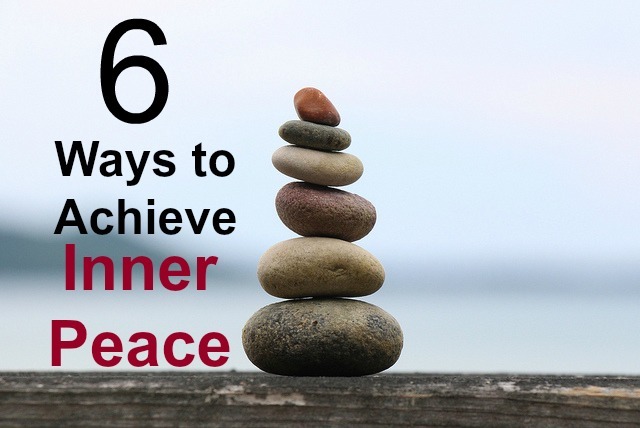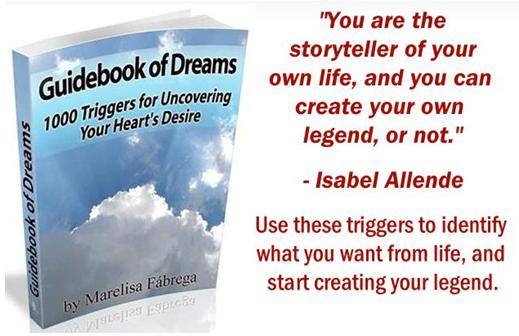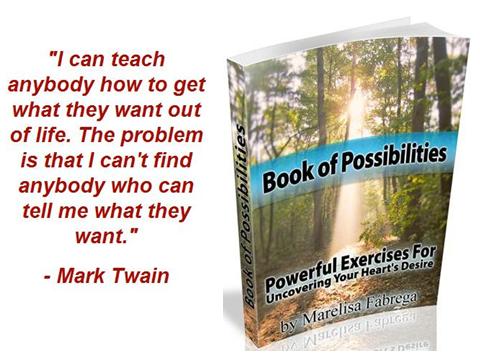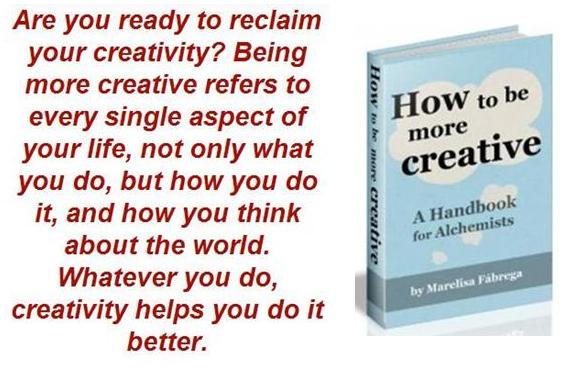
We must each find peace from within.
When you carry peace within you, you have the ability to remain calm and joyful at all times, regardless of outside circumstances, or what life offers you at any given moment. Here are some definitions of inner peace:
 Inner peace means being mentally and spiritually at peace.
Inner peace means being mentally and spiritually at peace.- Inner peace means freeing your mind from worry and negative thoughts.
- Inner peace is a state in which the mind is quiet and serene.
- Inner peace is having the ability to connect to the supreme self which is eternally at peace.
Inner peace may seem to be a lofty goal, but it’s a state of being that’s attainable for all of us. Below you’ll find six ways to achieve inner peace.
1. Accept What Is. Whatever is happening in the present moment, say “yes” to it. Don’t resist it; don’t struggle against it; and don’t try to argue with it. The present is already here, and it is what it is. When you struggle with the way things are now, you’re struggling with the entire universe.
No amount of arguing will change the present moment. Arguing with the way things are now just creates suffering. Instead of arguing, accept and surrender to what is. Then, ask yourself what the present moment requires of you, and do it.
2. Practice Non-judgment. There’s a TV show called “Rectify” which is about Daniel Holden, a man who spends 19 years of his life on death row for the rape and murder of his girlfriend. Then, he suddenly gets released when new evidence is uncovered which points to his innocence.
While on death row, his mother sends him books on spirituality, philosophy, and religion, and those books become his salvation. The teachings in the books show him how to cope with being on death row.
In one scene of the first episode of the show (31:20), there’s a flashback to Holden sitting on the cot in his prison cell. He can talk to the man in the cell next to his through the wall; the other prisoner’s name is Kerwin. Here’s a dialogue that transpires between the two men:
- Kerwin: “I can’t do time the way you do it.”
- Daniel: “I don’t do time.”
- Kerwin: “That’s what I’m talking about. I can’t do time, by not doing time, the way you do time.”
- Daniel: “Maybe if you didn’t judge the experience while it was happening . . .”
Both men were on death row. However, they were having very different experiences. Kerwin was angry and full of resentment because he was judging the situation he was in. Daniel, on the other hand, was calm and serene, because he wasn’t judging the situation. He was in a cell, but he wasn’t doing time.
The moment in which you start judging whatever is happening to you–and labeling it as “bad”, “unfair”, and so on–, you put yourself in a cell. You can free yourself from your self-made prison by practicing non-judgment.
3. Transform Your Addictions Into Preferences. There’s a fantastic book called “Handbook to Higher Consciousness” which was written in 1972 by Ken Keyes. I wrote about it in my post “37 Tidbits of Higher Consciousness”. In his book, Keyes indicates that you should transform your addictions into preferences.
An addiction is any desire that makes you upset or unhappy if it’s not satisfied. Here are some examples:
- If you get upset because you ask someone for help and they refuse, then you’re addicted to having people acquiesce to your requests.
- If you get upset because your car won’t start in the morning, then you’re addicted to having a car that’s in perfect working condition.
- If you get upset because the grocery store is out of your favorite breakfast cereal bars, then you’re addicted to your breakfast cereal bars.
When you transform your addictions into preferences, here’s what happens:
- If you ask your friend for help and he agrees to help you, that makes your day even better than it was.
- However, if he refuses to help you, everything is still fine. After all, being helped by your friend is just a preference. It’s OK if he doesn’t help you.
The same applies to the car and breakfast cereal bar examples. By transforming your addictions into preferences you will no longer feel restless and unhappy if your desires are not realized. And this leads to peace of mind.
4. Teach Your Mind to Become Still. A turbulent mind cannot be at peace. We need to teach our mind to move from turbulence to tranquility. The way we do is through the practice of meditation.
You can begin to meditate by closing your eyes and focusing on your breath. Then, treat any thoughts that try to take your attention away from your breath like clouds passing through an otherwise sunny day. If you start to think of something that makes you angry or anxious, do the following:
- Don’t try to push the thought away.
- At the same time, don’t place your attention on it.
- Simply allow the thought to make it’s away across the horizon of your awareness and then let it drift off.
While a mind that jumps indiscriminately from thought to thought is stressed and agitated, a mind that is still is at peace.
5. Practice Mindfulness. A mind that is at peace is in the here and now; it’s not thinking compulsively about the past and the future. You can bring your attention back to the present moment by doing the following:
- Place your attention on the feeling of aliveness in your body: in your hands, your arms, your legs, and so on.
- Place your attention on an object in your environment, and take a moment to really look at it.
- Take a moment to feel gratitude for something in the present moment: the coffee you’re drinking; the comfortable chair you’re sitting on; the sweater that’s keeping you warm; and so on.
Allow your mind to find harmony with the present moment. True peace arises in the now.
6. Use Your Willpower to Choose Thoughts that Make You Feel at Peace. In his book, Love Is Letting Go of Fear, Dr. Gerald G. Jampolsky sets forth 12 lessons for creating inner peace. Lesson 11 is about willpower. When most people think of willpower, they think of the following:
- Use your willpower to choose to eat an apple instead of a chocolate brownie.
- Use your willpower to choose to go out for a jog, instead of sitting on the couch with the remote in one hand and a bag of chips in the other.
- Use your willpower to choose to study instead of playing video games.
However, you can also use your willpower to choose your thoughts. That is, choose thoughts that will help you and bring you peace, instead of choosing thoughts that will hurt you. Do the following:
- Throughout the day pay attention to your thoughts.
- When you realize that you’re entertaining thoughts that hurt you, stop.
- Switch over to thoughts that help you, and that make you feel at peace.
Keep telling yourself that you can always choose thoughts that will bring you inner peace.
Conclusion
Achieve inner peace by applying the six lessons above on a consistent basis. Start right now, regardless of what may be going on in your life. Live your best life by creating inner peace.



Related Posts:
- 18 Ways to Keep Your Relationship Strong
- Five Ways to Make Friends and Get Along With Others
- 23 Wise Ways to Increase Your Happiness
- Three Happiness Tips From Eckhart Tolle
Did you enjoy this article? Subscribe to “Daring to Live Fully” by RSS or by email, and get free updates.







 Marelisa Fabrega is a lawyer and entrepreneur. She holds a Bachelor of Science in Business Administration from Georgetown University in Washington, D.C., as well as a Juris Doctor from the Georgetown University Law Center. You can learn more about her
Marelisa Fabrega is a lawyer and entrepreneur. She holds a Bachelor of Science in Business Administration from Georgetown University in Washington, D.C., as well as a Juris Doctor from the Georgetown University Law Center. You can learn more about her 





